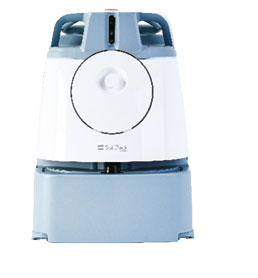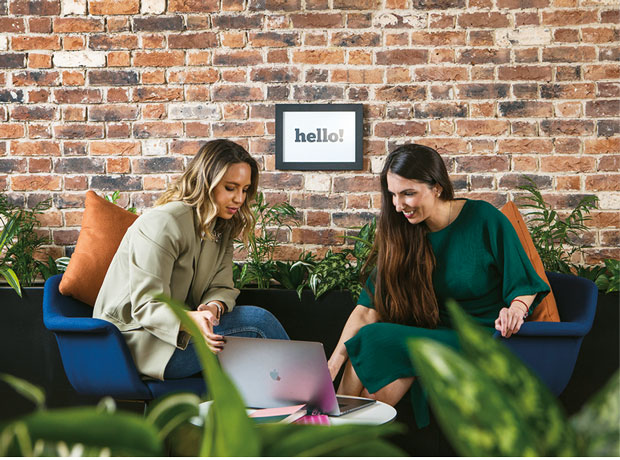PEOPLE POWER
Balancing the use of tech with the deployment of customer facing staff is an important consideration given the shift in working practices. Earlier this year the Institute for Public Policy Research (IPPR) issued a report which warned almost eight million UK jobs could be lost to artificial intelligence in a ‘jobs apocalypse’.
 Stefano Bensi, General Manager at SoftBank Robotics EMEA, which specialises in collaborative robots for the hospitality industry, agrees that while IT, E-commerce and other technological solutions are being introduced at speed in front of house operations, they can be viewed as an aide, not a substitute for human interaction.
Stefano Bensi, General Manager at SoftBank Robotics EMEA, which specialises in collaborative robots for the hospitality industry, agrees that while IT, E-commerce and other technological solutions are being introduced at speed in front of house operations, they can be viewed as an aide, not a substitute for human interaction.
“With many organisations still doing their best to entice people back to the office, the employee or guest experience needs to be as good as it can be. Introducing automation in the form of robotics will free facilities staff to focus on areas that truly enhance the guest experience or add value to the client overall.
“Facilities management professionals understand well the benefits of cross-skilling staff. This is based on the belief that everyone in the broader facilities team can contribute positively to the employee or guest experience.”
Hiner of Portico agrees with this observation, arguing that it is the combination of cutting-edge technology with human-centred traditional reception services that is offering an innovative model for reception services and one which brings with it a huge number of benefits.
He explains: “The synergy of the two creates exceptional customer service. The technology automates routine tasks, freeing people up to focus on the human elements of the workplace – in this case, providing a first-class customer experience.
“The addition of the community events and offers page [on the app] which features event details, exclusive offers, and building news – fosters a sense of community, encouraging tenant engagement and interaction. Portico also collaborates with local businesses to populate the Equiem app’s events and information section, securing discounts for tenants at restaurants, hairdressers, food markets, and gyms.”
DATA GATHERING
Meet and greet however, isn’t the only part of the digital arsenal, with new solutions, particularly in data analysis increasingly being used to help enhance the guest experience. Another JLL’ report Is hybrid really working? found that 60 per cent of organisations are aiming to improve the employee experience and support changed workstyles (59 per cent), and significantly, this resulted in an increase in the employment of occupancy/vacancy data and density data.
As workplace planning and management becomes more complex, accurate data and new technologies will not only serve as a crucial guide to digitising buildings but enable a more holistic approach to the occupant experience.
“Imagine having a magic mirror that reveals the secrets behind guest experiences in real time,” enthuses Angelico. “That’s what real time feedback does for us, it’s like peering into the ‘why’ behind every guest interaction. Through automated systems, we can swiftly analyse guest feedback, identifying trends and issues for resolution and continuous improvement of our services. These systems can also analyse guest preferences and behaviours, helping us to deliver personalised recommendations for services and activities tailored to peoples’ interests.”
However she also believes that it’s the interaction between the front of house team and the tech which is the essential conduit between people and place.
“Front of house are the eyes and ears of our clients, providing essential insights from the ground level. While automated systems are helpful, nothing can replace the value of personal, face-to-face feedback – it’s like a secret handshake that builds trust and connection like nothing else.”
According to Bensi access to all this data now enables organisations to benchmark the quality and consistency of their services. The most obvious is by equipping a building with sensors to help measure data on things such as occupancy and footfall, especially important in a hybrid working environment because it allows you to adjust services in line with these metrics.
“In practice,” he says, “this capability means you can turn up services on busy days, or in busy areas, to enhance the guest experience, or turn them down to be more efficient during the quieter moments.”
For Hiner at Portico: “Front of house services have adapted to flexible working patterns by implementing technology-driven solutions and dynamic scheduling. Enhanced communication tools and remote access systems allow seamless coordination between on-site and off-site teams. These innovations ensure efficient, personalised service despite non-traditional working hours.”
PERSONAL TOUCH
The question remains however, that with the increasing use of automation, will front of house providers be able to continue to deliver a personal touch?
Angelico is confident that harnessing data and AI will help front of house providers offer guests an even more personalised experience by gathering preferences and using this to enhance their experience.
She says: “Nowadays, many of us rely on apps to reserve desk spaces and let’s face it, we’re creatures of habit. We have our favourite spots — whether it’s the desk by the window or close to the air conditioning. So, just imagine if your go-to desk isn’t available. What if the app could suggest a similar desk, perhaps one with a similar view or distance to the kitchen? This has the potential to swiftly turn a potentially negative experience into a positive one, all without needing to interact with a team member but still delivering a personal touch.”





